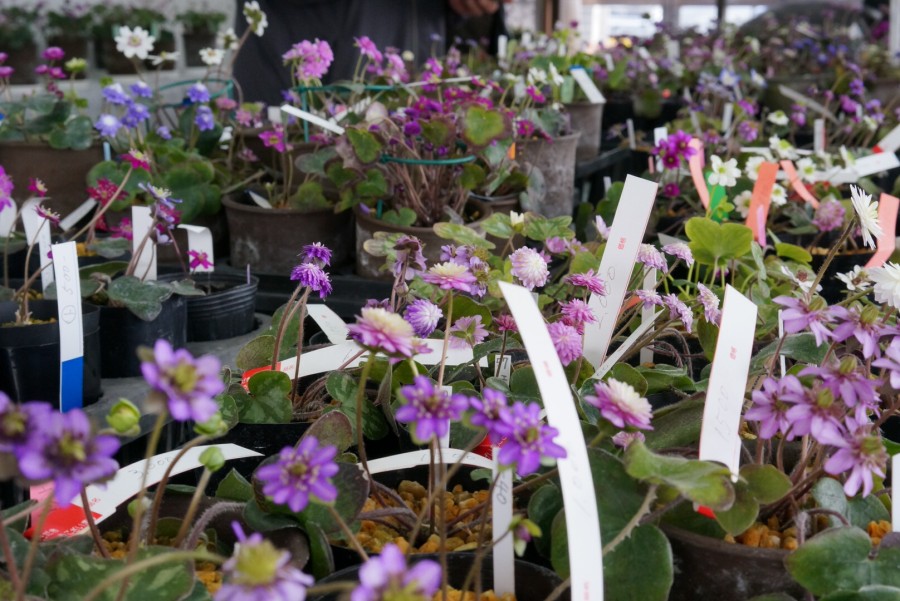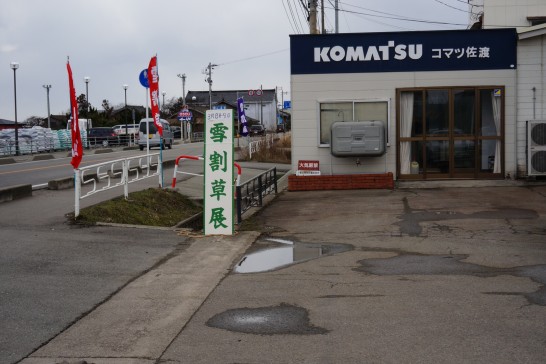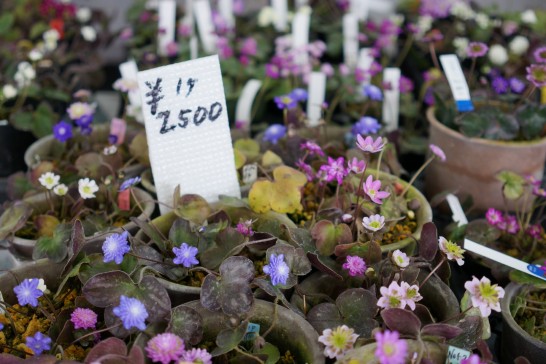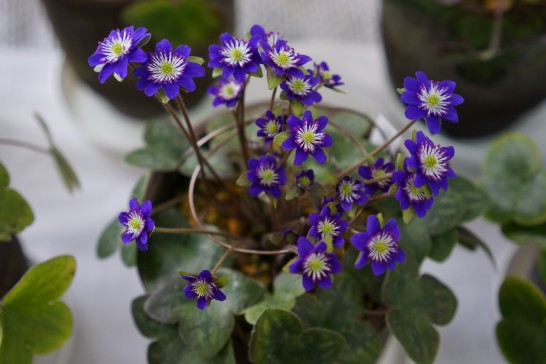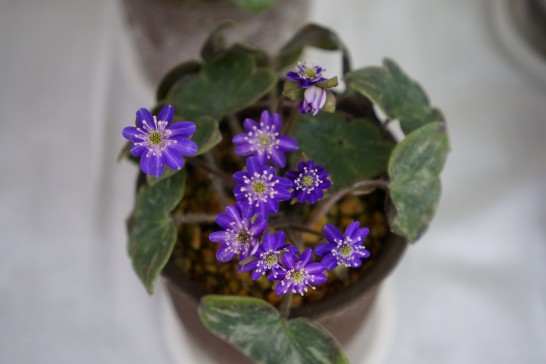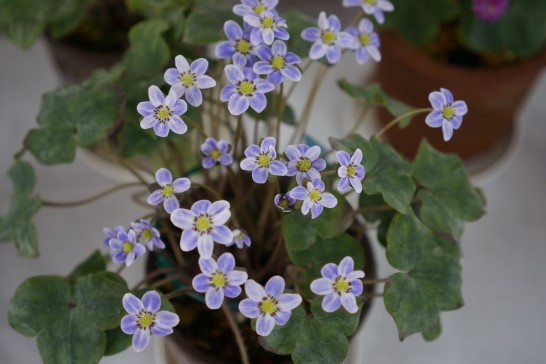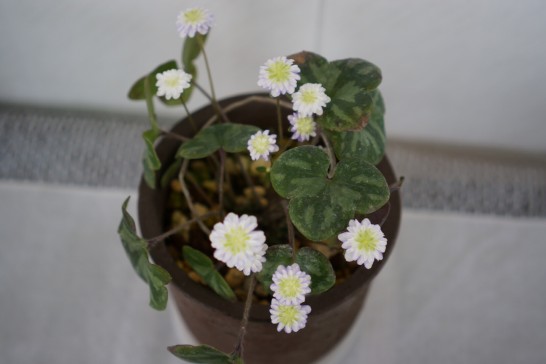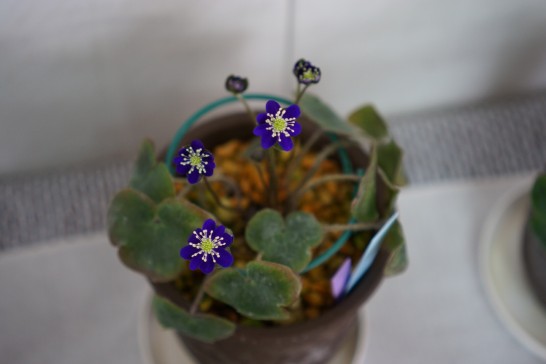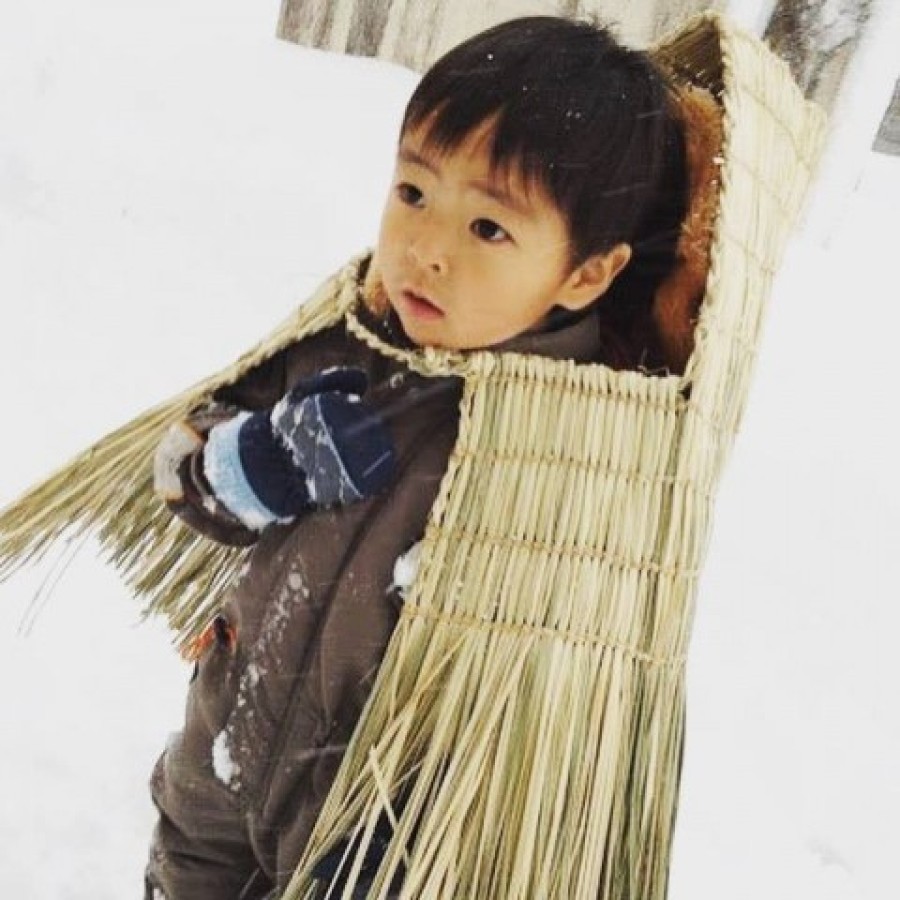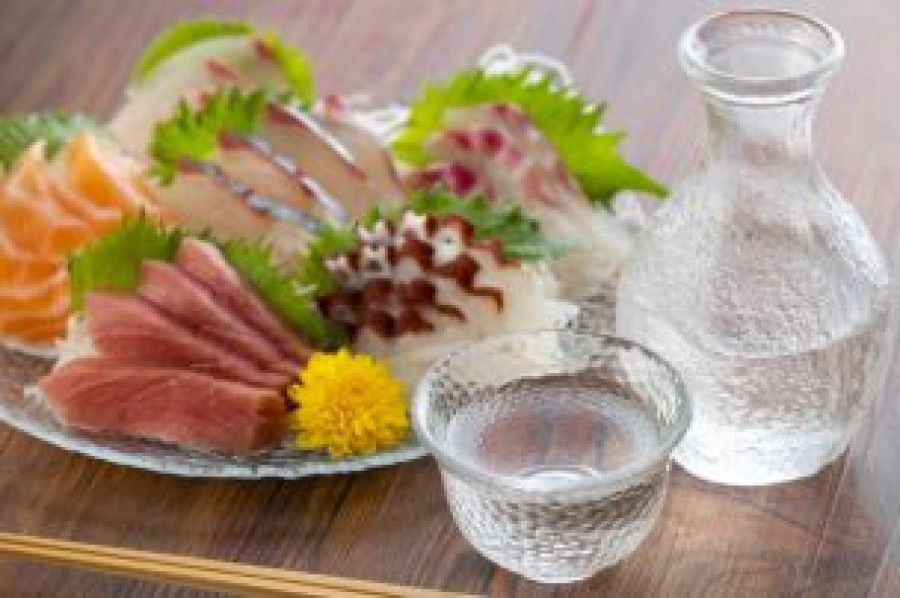I went to the '2014 Snowflake Exhibition and Sale' organised by the Sado Soyukai, which is being held from 8 to 9 March.
Since the beginning of March, snowflake exhibitions have been held all over Sado City. This time, I visited a snowflake exhibition in the Kanai area. The exhibition was held in the Komatsu Sado Showroom in Izumi, Sado City. It was an easy place to find, opposite the Hiraisei Home Centre on the national highway, and there were several flags saying 'Snow Crackers Exhibition' along the road, so I didn't get lost.
There were perfect parking spaces. When you open the door, there is a space to take off your shoes, change into slippers and go inside.
In one small, compact room, a table is placed against the wall and in the centre of the room, on which small bowls of snowdrops shine with colourful hues.
The room was filled with the faint sweet fragrance of snowdrops. The small pots did not have the names of the flowers attached to them, so I did not know the details, but I was told that they are generally safe to be lumped together as 'snowdrops'. As it was an exhibition and sale, there were price tags attached. The cheapest was about 500 yen and the most expensive was 4,000 yen.
I did a bit of research on the internet, although my knowledge was too limited. It seems that Sado is famous throughout the country as a place of production of snowdrops.
"Snowdrops" is the horticultural name for the genus of the buttercup family, Myssaceae, in Japan, where Myssaceae, Sphaerotrichum vulgare, Sphaerotrichum oomyssare and Kesuhamasou grow wild, and from late March to mid-April the flowering season begins and many colourful and beautiful snowdrops can be seen. The most notable of these, the 'Oomisumisou', grows naturally on the Sea of Japan coast, mainly in Niigata Prefecture. (Reference: National Echigo Hillside Park website ).
Sado Island is particularly famous throughout the country as a production area for this species, and snowdrop exhibitions and sales are usually held in March in various parts of the island. (Reference: http: //sadokoi.com/yukiwarisou/)
Incidentally, in the quoted text above, where it says 'Ohmisumisou', it was 'Ohmisumisou' in the original quoted text. Probably a typo.
Further internet search. Looked up 'mississippiensis'.
- Also called triangular grass.
- Scientific name: Hepatica nobilis (does Hepatica mean liver?).
- Perennial herbs of the buttercup family, Misumisaceae.
- Evergreen (!) even under snow. It is also known as snowdrops because it is evergreen even under snow.
- Native to the temperate zones of the Northern Hemisphere, in Japan it grows abundantly in mountainous areas west of central Honshu.
- In medieval Europe, it was used to treat liver ailments because the shape of the leaves reminded people of the liver.
- It is now sometimes used to treat acne, bronchitis and gout.
(cited from http://ja.wikipedia.org/wiki/ミスミソウ)
I can't believe they use it to treat liver disease because the shape of the leaves reminds me of the liver... Still, it's amazing that it can keep its green leaves without withering under snow. I am curious about the composition of the leaves, which are also used for medicinal purposes.
Now let me introduce you to some of my own favourite snowdrops.
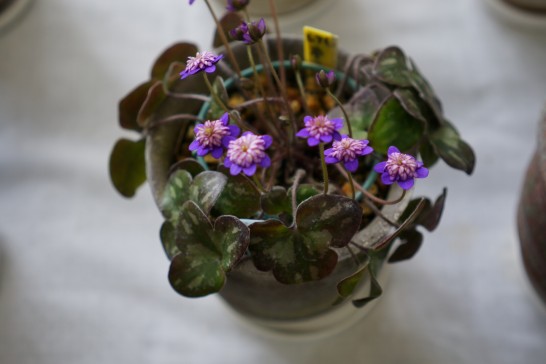 紫色の花弁の上にピンク色の八重桜のような花が乗っかってます。
紫色の花弁の上にピンク色の八重桜のような花が乗っかってます。
 薄い紫色が中央に向かうについれて白くなるというグラデーション。
薄い紫色が中央に向かうについれて白くなるというグラデーション。
Stamens shoot outwards from the inside like fireworks.
The pale purple colour is filled with a calm atmosphere.
The unrealistically intense purple is pleasing to the eye.
Why not visit them once?
advertisement


